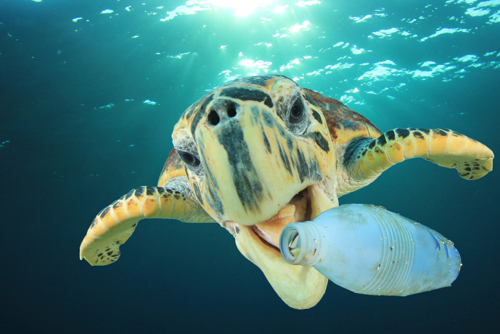Rebecca Waters explores how practices can help solve ocean pollution.
Plastic in the world’s oceans has become one of the most important issues of our time. However, while most of us are likely to be aware of the problem, do we truly take the time to delve into the main sources of plastic in the ocean and understand where it comes from?
Better understanding of the plastic problem could helps us to contextualise the crisis better, and open up new opportunities for us to fight it in innovative ways by embracing ingenious solutions.
Ocean plastic – what are the figures?
Estimates suggest that eight million metric tons of plastic end up in the world’s oceans every year – the equivalent of dumping an entire rubbish truck full of plastic into the sea every minute! However, some sources suggest that the true figure is likely to be at least 14 million tons – which isn’t beyond the realms of possibility when you consider how difficult it is to regulate stray plastic waste entering waterways on land, and how much waste is illegally dumped every year. This joins the 150 million tons of plastic waste that have entered these ecosystems already – a huge amount of waste that means plastic has become the most abundant type of litter in these environments, making up 80 per cent of all marine debris.
Inevitably, this has had significant consequences on the marine life that call the sea their home. Plastic has been found in the bodies of 60 per cent of seabird species and 100 per cent of all sea turtle species. Additionally, in a study that assessed over 500 hundred different species of marine fish, it was found that over two-thirds of them had ingested plastics. This is concerning as it shows how deeply plastics have infiltrated into ocean life. Plus, with plastic entering the food chain, humans are now consuming more of it as well. A rather harrowing infographic from Plastic Oceans suggests that in a lifetime, it’s likely that the average human will eat up to 18kg of plastic – the equivalent weight of two large recycling bins.

But where does ocean plastic come from?
Most plastic in the sea comes from various sources on land, but there is one significant contributor to marine plastic – fishing equipment. Figures suggest that 20 per cent of all marine plastic is comprised of items such as discarded fishing nets, fishing lines, nets and pots. These items are referred to as “ghost gear” as they have the ability to still harm wildlife, even without humans actively using them.
640,000 tons of ghost gear is discarded or lost in the oceans each year, and this figure is only set to increase as the global fishing industry continues to expand. Fishing items tend to be made out of nylon – a type of plastic that is durable and doesn’t decompose. As such, discarded nets remain fatal to any wildlife that get caught in them, while thin fishing lines (that are often invisible to creatures due to being made from translucent nylon) can easily tangle around wildlife and cause significant harm. As a result, 200,000 seabirds as well as 150,000 whales and seals are killed by ghost gear each year – lives that could be saved if these items were disposed of more responsibly.
What can dental professionals do to help?
Reducing the amount of plastic that you use in practice, and ensuring that all plastic that is used is properly disposed of, are smart ways that you can help prevent this material entering the ocean. However, another step you can take to help tackle the problem is to adopt solutions that utilise recycled plastic materials.
For example, Initial Medical offers a range of Fixed Entrance Matting options that are made from Econyl – a type of regenerated nylon material made from nylon waste including fishing nets and other ghost gear that can be reused and recycled again and again. Light, durable and no different in performance from virgin nylon, this material eliminates the need for more nylon to be produced and helps to prevent so much of this material entering the world’s oceans.
We only have one planet
As we learn more about plastic pollution in our oceans, it’s clear that we need to find a solution. By adopting products that are eco-friendly and sustainable, you can ensure that your dental practice is helping the global effort to reduce plastic waste, saving the lives of marine fauna, and ensuring that both animals and humans alike can continue to enjoy these beautiful ecosystems in the future.
For more information call 0870 850 4045 or visit www.initial.co.uk/medical
References available on request.

